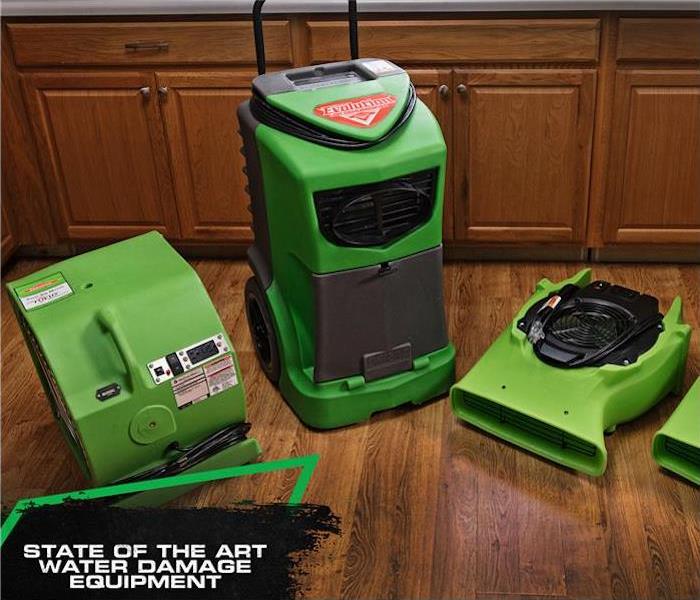SERVPRO Saves Bellevue Properties from Water Damage
9/8/2022 (Permalink)
 SERVPRO's extensive inventory of water extraction and drying equipment mitigate the damage to your Bellevue home.
SERVPRO's extensive inventory of water extraction and drying equipment mitigate the damage to your Bellevue home.
How SERVPRO Technicians Plan Water Damage Restoration of Bellevue Properties
Meticulous planning is a crucial step in the restoration of water damage to your Bellevue property. A well-thought-out plan can save time and resources and prevent any accidental secondary damage to your property. Hence, SERVPRO puts a lot of stock in proper planning and coordination during restoration work.
The process of water damage restoration of your Bellevue home begins with SERVPRO technicians thoroughly inspecting the property and identifying the problem areas. The next step is to prepare the worksite before the restoration activities begin. Technicians set up a staging area within the premises as a central hub for coordinating all activities. Some of the planned restorative activities might include-
- Extraction of accumulated water
- Detecting hidden moisture with the structural components
- Providing humidity control
- Controlled demolition to accelerate the drying or remove damaged material
- Deodorization
Extracting Excess Water from Your Property
SERVPRO technicians prioritize removing any standing water present on the property as water can damage structural components. The longer the water penetrates components, the more damage it can cause.
We use state-of-the-art equipment to extract water, such as-
- Truck-mounted or portable extractors
- Trash pumps
- Submersible pumps
Water from carpets and subfloors is extracted using special tools called carpet wands and squeegee wands. Technicians dispose of the extracted water following applicable laws and regulations.
Detecting Hidden Moisture
Once the standing water from the property is removed, the technicians identify hidden moisture in structural components. Some of the most common moisture sensing equipment that SERVPRO technicians use in water damaged Bellevue homes include-
- Moisture Sensors: Technicians use these pieces of equipment to detect moisture present in carpets and padding. The moisture sensors have sharp probes penetrating the carpets and pads to detect dampness. Technicians can detect but not measure moisture using these sensors.
- Thermal Imaging Cameras: Also called infra-red cameras, restorers use these to detect and monitor the moisture level in building materials. The cameras also allow the technicians to visualize how water traveled through the structure and detect moisture that otherwise would never have been discovered.
- Moisture Meters: SERVPRO water restoration experts use moisture meters to measure the actual water content of various materials.
- Thermo-hygrometers: Technicians use these instruments to measure the relative humidity and temperature of air masses. Some of the more advanced thermos-hygrometers that we use are capable of monitoring vapor pressure and dew point.
- Inspection Cameras/ Borescopes: Allow the technicians to look into cavities for a visible inspection of the extent of water damage. We also use motorized cameras for use inside the ductwork. Cameras and borescopes can take still images as well as record videos.
Where Are Moisture Measurements Done?
SERVPRO technicians use moisture monitoring equipment to determine the moisture content for five areas:
- Air in affected areas
- Air in unaffected areas
- The air outside the structure
- Air processed through dehumidifiers
- Air coming out of HVAC systems
After comparing these moisture readings, the technicians determine the best possible operating conditions and placements for dehumidifying equipment and air movers.
SERVPRO technicians work hard to leave your home restored “Like it never even happened.” We are just a call away if you need to deal with water intrusion in your Bellevue property. Call SERVPRO of Bellevue West at (425) 454-3900; We’re Faster To Any Size Disaster.






 24/7 Emergency Service
24/7 Emergency Service